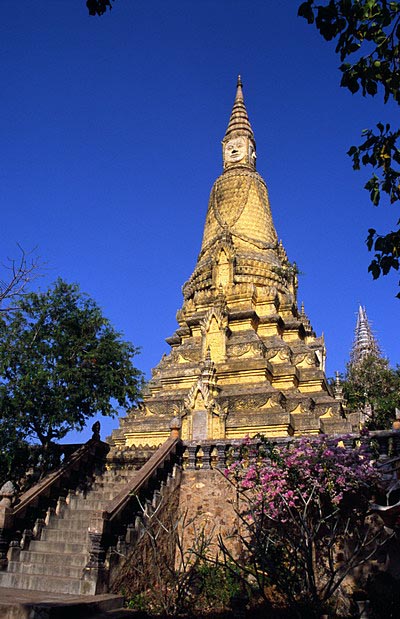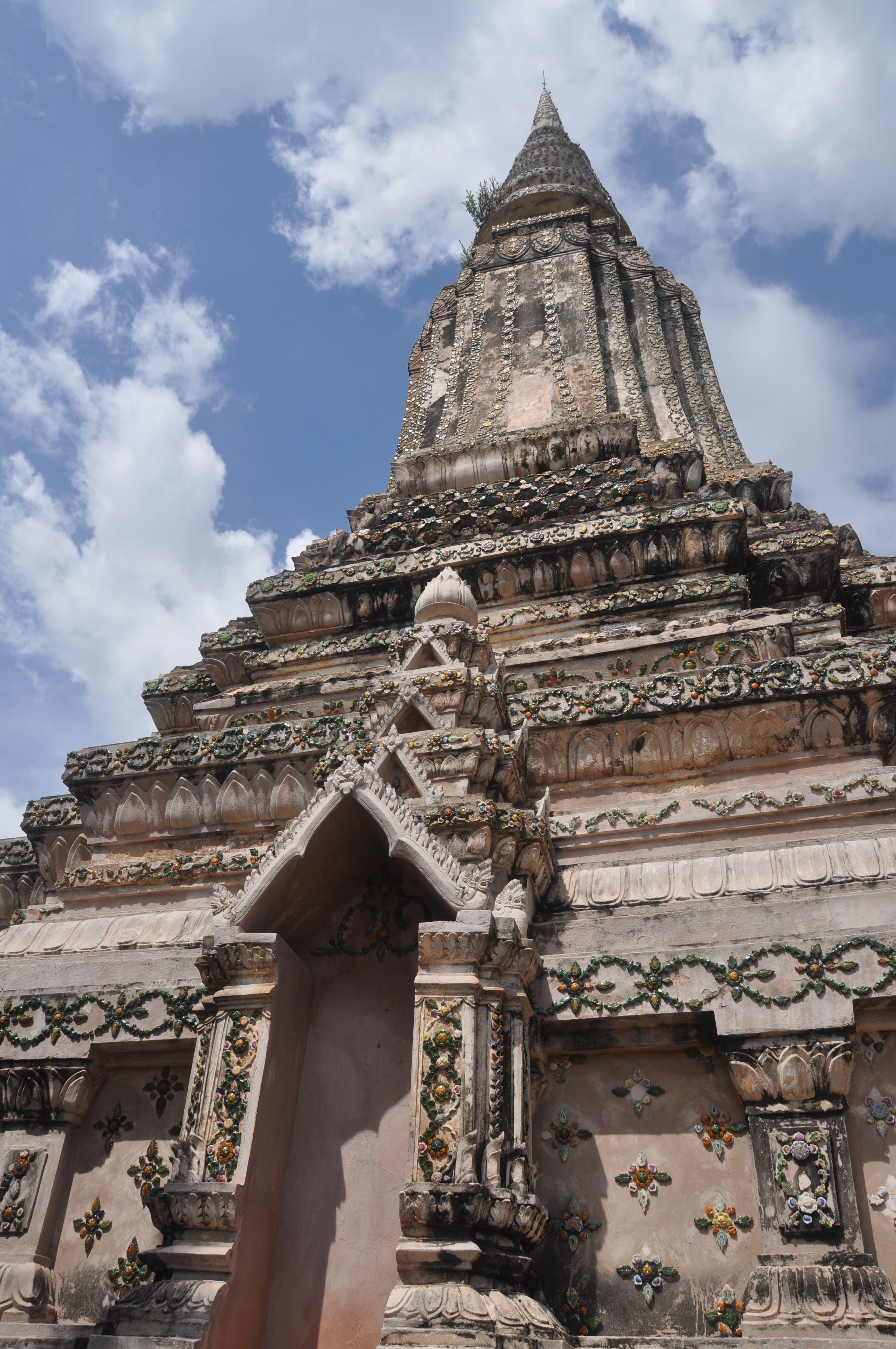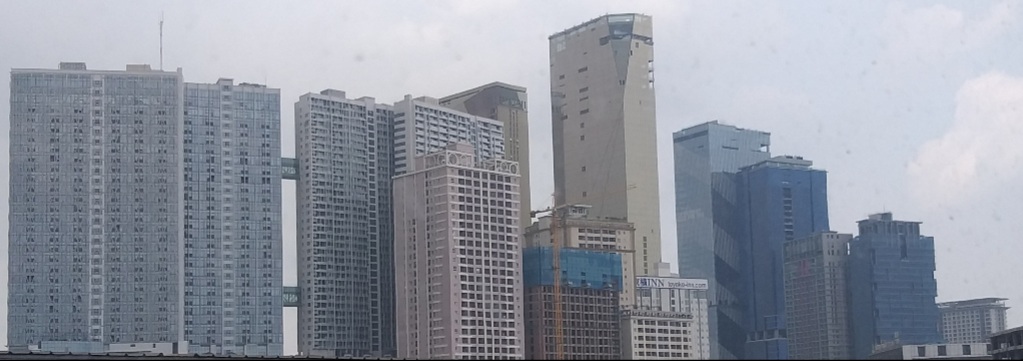|
Oudong
( km, ឧដុង្គ; also romanized as Udong or Odong) is a former town of the post-Angkorian period (1618–1863) situated in present-day ''Phsar Daek'' Commune, Ponhea Lueu District, Kandal Province, Cambodia. Located at the foothill of the mountain Phnom Oudong, also known as Phnom Preah Reach Troap ( km, ភ្នំព្រះរាជ្យទ្រព្យ), about 35 km northwest of the modern capital Phnom Penh via National Road No. 5, Oudong was a royal residence and Cambodia's capital for almost 250 years until 1866. A monumental royal necropolis of sovereigns of several centuries is scattered on top of the prominent bisected mountain, which runs from the southeast to the northeast. Etymology The city's name is derived from the Sanskrit word "" ( sa, उत्तुङ्ग), meaning tall, which probably refers to the mountain. As it had gained religious merit and significance it might have undergone extension towards: "great" or "supreme". History Oudong was ... [...More Info...] [...Related Items...] OR: [Wikipedia] [Google] [Baidu] |
Post-Angkor Period
The post-Angkor period of Cambodia ( km, ប្រទេសកម្ពុជាក្រោយសម័យអង្គរ), also called the Middle Period and Dark Age ( km, យុគ្គអន្ធកាល, lit=Isolationism, link=yes; ( km, ភាពឯកោ, lit=Loneliness, link=no); ( km, ភាពវឹកវរ, lit=Vigilantism, link=no)), refers to the historical era from the early 15th century to 1863, the beginning of the French protectorate of Cambodia. As reliable sources (for the 15th and 16th centuries, in particular) are very rare, a defensible and conclusive explanation that relates to concrete events that manifest the decline of the Khmer Empire, recognised unanimously by the scientific community, has so far not been produced. However, most modern historians have approached a consensus in which several distinct and gradual changes of religious, dynastic, administrative and military nature, environmental problems and ecological imbalance coincided with shifts ... [...More Info...] [...Related Items...] OR: [Wikipedia] [Google] [Baidu] |
Ang Duong
Ang Duong ( km, អង្គឌួង ; 12 June 1796 – 19 October 1860) was the King of Cambodia from 1841 to 1844 and from 1845 to his death in 1860. Formally invested in 1848, his rule benefited a kingdom that suffered from several centuries of royal dissent and decline. His politics focused on sustained national unity and identity and the minimization of foreign interference. He issued the first substantial revision of the legal codex in centuries, and he encouraged and supervised religious and cultural reforms. Confronted with increasing Siamese and Vietnamese encroachment, he attempted to establish an alliance with colonial France on a sovereign basis. Although this alliance ultimately culminated in the 90-year period of the French protectorate of Cambodia, King Ang Duong's actions were the foundation for the modern united state of Cambodia. Ang Duong ascended the throne with the title ''Preah Karuna Preah Bat Samdech Preah Harireak Reamea Issathipadei Ang Duong'' ( km, ... [...More Info...] [...Related Items...] OR: [Wikipedia] [Google] [Baidu] |
Srei Soryapor
Barom Reachea IV or Barom Reachea VII (1548–1619), also known as Srei Soriyopear (also spelled Soryopor or Soryapor; km, ស្រីសុរិយោពណ៌), was the Cambodian king who ruled from 1603 to 1618. He was appointed the '' ouparach'' (heir apparent or viceroy) by his elder brother Satha I in 1579. During Satha I he was order to help Siamese and fight against Burmese in order to help siamese restore Ayutthaya. In 1594, when Cambodia was attacked by Siam, Chey Chettha I and Satha I fled the capital, leaving Soriyopear to defend against the Siamese. Soriyopear was granted the title ''Uprayorach'' ( ឧភយោរាជ), the title usually borne by kings who had abdicated but retained executive powers. He was assisted by Spanish and Portuguese mercenaries, but in the same year Lovek was captured by Siamese, he was taken to Ayutthaya along with 90,000 Cambodians.He is the father of the princess Ek Kasattri ( km, អ្នកអង្គម្ចាស់ឯ� ... [...More Info...] [...Related Items...] OR: [Wikipedia] [Google] [Baidu] |
History Of Cambodia
The history of Cambodia, a country in mainland Southeast Asia, can be traced back to Indian civilization. Detailed records of a political structure on the territory of what is now Cambodia first appear in Chinese annals in reference to Funan, a polity that encompassed the southernmost part of the Indochinese peninsula during the 1st to 6th centuries. Centered at the lower Mekong, Funan is noted as the oldest regional Hindu culture, which suggests prolonged socio-economic interaction with maritime trading partners of the Indosphere in the west. By the 6th century a civilization, called Chenla or Zhenla in Chinese annals, firmly replaced Funan, as it controlled larger, more undulating areas of Indochina and maintained more than a singular centre of power. The Khmer Empire was established by the early 9th century. Sources refer here to a mythical initiation and consecration ceremony to claim political legitimacy by founder Jayavarman II at Mount Kulen (Mount Mahendra) in 802 CE. A ... [...More Info...] [...Related Items...] OR: [Wikipedia] [Google] [Baidu] |
Norodom
Norodom ( km, នរោត្តម, ; born Ang Voddey ( km, អង្គវតី, ); 3 February 1834 – 24 April 1904) was King of Cambodia from 19 October 1860 to his death on 24 April 1904. He was the eldest son of King Ang Duong and was a half-brother of Prince Si Votha and King Sisowath. He was elected to the throne in 1860 but would not be crowned until 1864 due to the fact that Siam held the royal regalia (the royal crown and other artefacts). In 1863, he signed a treaty with France by which he gave France control over Cambodia's foreign relations in exchange for personal protection against his enemies. The treaty saved Cambodian independence, but French control over Cambodia's internal affairs strengthened continually until the end of his reign (full independence was not restored until 1953). His reign of is the longest in Cambodian history in terms of verifiable exact date. Upon his death, he was succeeded by his half-brother, Sisowath. He is the progenitor of the ... [...More Info...] [...Related Items...] OR: [Wikipedia] [Google] [Baidu] |
Cambodia
Cambodia (; also Kampuchea ; km, កម្ពុជា, UNGEGN: ), officially the Kingdom of Cambodia, is a country located in the southern portion of the Indochinese Peninsula in Southeast Asia, spanning an area of , bordered by Thailand to the northwest, Laos to the north, Vietnam to the east, and the Gulf of Thailand to the southwest. The capital and largest city is Phnom Penh. The sovereign state of Cambodia has a population of over 17 million. Buddhism is enshrined in the constitution as the official state religion, and is practised by more than 97% of the population. Cambodia's minority groups include Vietnamese, Chinese, Chams and 30 hill tribes. Cambodia has a tropical monsoon climate of two seasons, and the country is made up of a central floodplain around the Tonlé Sap lake and Mekong Delta, surrounded by mountainous regions. The capital and largest city is Phnom Penh, the political, economic and cultural centre of Cambodia. The kingdom is an elective co ... [...More Info...] [...Related Items...] OR: [Wikipedia] [Google] [Baidu] |
Phnom Penh
Phnom Penh (; km, ភ្នំពេញ, ) is the capital and most populous city of Cambodia. It has been the national capital since the French protectorate of Cambodia and has grown to become the nation's primate city and its economic, industrial, and cultural centre. Phnom Penh succeeded Angkor Thom as the capital of the Khmer nation but was abandoned several times before being reestablished in 1865 by King Norodom. The city formerly functioned as a processing center, with textiles, pharmaceuticals, machine manufacturing, and rice milling. Its chief assets, however, were cultural. Institutions of higher learning included the Royal University of Phnom Penh (established in 1960 as Royal Khmer University), with schools of engineering, fine arts, technology, and agricultural sciences, the latter at Chamkar Daung, a suburb. Also located in Phnom Penh were the Royal University of Agronomic Sciences and the Agricultural School of Prek Leap. The city was nicknamed the "Pearl of As ... [...More Info...] [...Related Items...] OR: [Wikipedia] [Google] [Baidu] |
Longvek
Longvek or Lavek ( km, លង្វែក, or , ; meaning "intersection" or "crossroads") was a city in Cambodia. It was the second capital city during the Cambodia's Post-Angkor period which began after the Angkor era. The city was known to early European traders as "Cambodia". The city used to serve as a center of the country's military. It was a gathering point for people of knowledge including scholars and martial artists. Longvek was chosen by King Ang Chan I after the sacking of Angkor by the Siamese as a new capital because of its more readily defensible terrain. As a result, there was a time when Cambodia was often referred to as Longvek by foreign travellers. It was considered one of the greatest cities in Cambodia. After Ang Chan I defeated Sdach Korn he moved the capital city from Chaktomuk to Longvek in 1528. This new city was the capital of the Kingdom of Cambodia from 1528 to 1594. King Ang Chan I ordered his palace to be built in Longvek in 1553. History During t ... [...More Info...] [...Related Items...] OR: [Wikipedia] [Google] [Baidu] |
Archaeological Sites In Cambodia
This is a list of notable archaeological sites sorted by country and territories. For one sorted by continent and time period, see the list of archaeological sites by continent and age. Afghanistan * Aï Khānum *Bagram *Buddhas of Bamiyan * Hadda *Haji Piyada mosque in Balkh *Mes Aynak *Minarets in Ghazni * Mousallah Complex * Surkh Kotal *Takht-i-rustam *Tillya Tepe Albania *Amantia * Antigonia *Antipatrea (modern Berat) * Apollonia *Buthrotum *Byllis *Dimale *Epidamnos or Dyrrachium (modern Durrës) *Lissos or Lissus (modern Lezhë) *Oricum *Phoenice (modern Finiq) *Scodra (modern Shkodër) Algeria *Aïn Turk, Bouïra *Altava *Beni Hammad Fort *Bir el Ater *Cirta *Diana Veteranorum *Djémila *Fossatum Africae *Gemellae *Ghoufi *Oricum *Hammam Essalihine *Hippo Regius *Jedars *Lambaesis *Mila, Algeria *Miliana *Partenia *Qalʿat ibn Salama *Roknia *Royal Mausoleum of Mauretania *Tassili n'Ajjer *Tébessa *Timgad *Tipaza *Uzinaza Argentina *Cueva de las Manos *Piedra Mu ... [...More Info...] [...Related Items...] OR: [Wikipedia] [Google] [Baidu] |
Ponhea Lueu District
Ponhea Lueu District ( km, ស្រុកពញាឮ) is a district (''srok'') of Kandal Province, Cambodia. The district is subdivided into 14 communes (''khum'') such aChhveang Chrey Loas, Kampong Luong, Kampong Os, Kaoh Chen, Phnum Bat, Ponhea Lueu, Ponhea Pon, Preaek Pnov, Preaek Ta Teaen, Phsar Daek, Samraong, Tumnob Thum, Vihear Luong and 141 villages (''phum''). In the northern part of the district, near the border between Kampong Speu and Kampong Chhnang is the old royal capital of Oudong ( km, ឧដុង្គ; also romanized as Udong or Odong) is a former town of the post-Angkorian period (1618–1863) situated in present-day ''Phsar Daek'' Commune, Ponhea Lueu District, Kandal Province, Cambodia. Located at the foothill of th .... References External linksKandal at Royal Government of Cambodia website [...More Info...] [...Related Items...] OR: [Wikipedia] [Google] [Baidu] |
Sanskrit
Sanskrit (; attributively , ; nominally , , ) is a classical language belonging to the Indo-Aryan branch of the Indo-European languages. It arose in South Asia after its predecessor languages had diffused there from the northwest in the late Bronze Age. Sanskrit is the sacred language of Hinduism, the language of classical Hindu philosophy, and of historical texts of Buddhism and Jainism. It was a link language in ancient and medieval South Asia, and upon transmission of Hindu and Buddhist culture to Southeast Asia, East Asia and Central Asia in the early medieval era, it became a language of religion and high culture, and of the political elites in some of these regions. As a result, Sanskrit had a lasting impact on the languages of South Asia, Southeast Asia and East Asia, especially in their formal and learned vocabularies. Sanskrit generally connotes several Old Indo-Aryan language varieties. The most archaic of these is the Vedic Sanskrit found in the Rig Veda, a colle ... [...More Info...] [...Related Items...] OR: [Wikipedia] [Google] [Baidu] |







